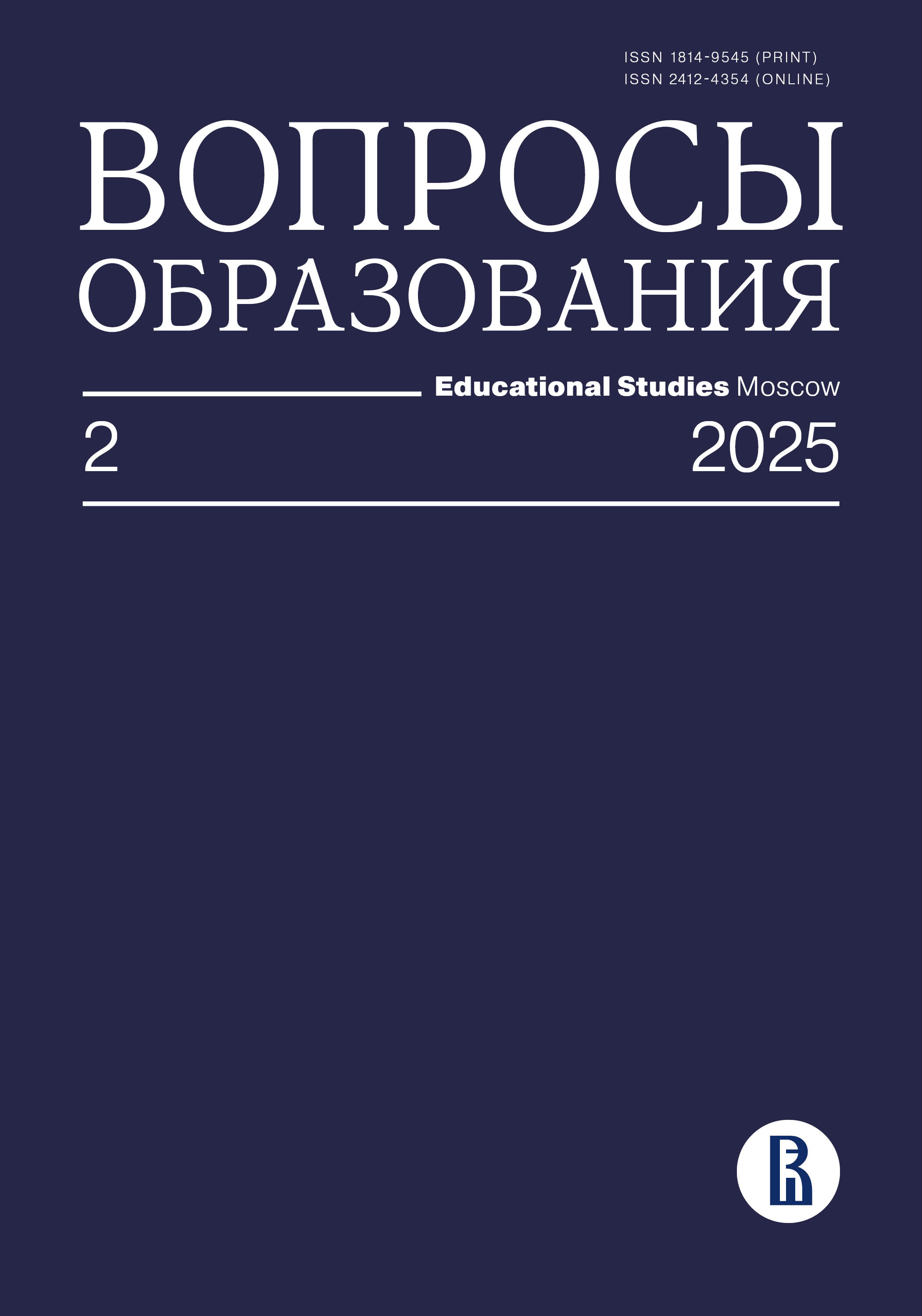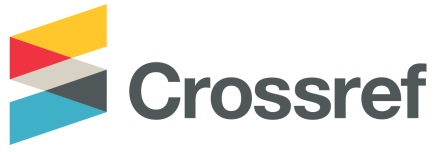Финансовая грамотность и доходность портфеля начинающего инвестора: есть ли связь?
Аннотация
Бурное развитие рынка частных инвестиций характерно для большинства современных экономик. В качестве важной составляющей ответственного финансового поведения потребителей финансовых услуг регуляторы и аналитики финансового рынка рассматривают финансовую грамотность.
Проведено исследование с целью выявить факторы, влияющие на доходность инвестиционного портфеля начинающего молодого частного инвестора, с акцентом на финансовую грамотность как условие успешных инвестиций. Выборку составили 550 российских студентов экономических специальностей, выполнявших в период с 2020 по 2023 г. учебное задание по формированию виртуального краткосрочного инвестиционного портфеля. В качестве метода исследования использована биномиальная логистическая регрессия, оценки полученных коэффициентов которой преобразованы в отношения шансов для корректной интерпретации полученных результатов. Установлено, что вероятность получить положительную доходность портфеля для молодого частного инвестора не определяется чистым показателем уровня финансовой грамотности, однако этот показатель может быть значим в совокупности с некоторыми поведенческими характеристиками инвестора. Среди исследованных факторов с вероятностью положительной доходности инвестиционного портфеля наиболее сильно связаны поведенческие характеристики инвестора, такие как склонность к риску, коллективность в принятии решений, ответственность и увлеченность вопросами инвестирования. При этом на успех начинающего молодого частного инвестора влияют общее состояние экономики и турбулентность на финансовых рынках.
Скачивания
Литература
Abdin S.Z., Qureshi F., Iqbal J., Sultana S. (2022) Overconfidence Bias and Investment Performance: A Mediating Effect of Risk Propensity. Borsa Istanbul Review, vol. 22, iss. 4, pp. 780–793. https://doi.org/10.1016/j.bir.2022.03.001
Azizah U.S.A., Mulyono H. (2020) Dataset on Determinants of Intention and Investment Behaviour amongst Young Indonesian Millennials. Data in Brief, vol. 32, October, Article no 106083. https://doi.org/10.1016/j.dib.2020.106083
Balasubramnian B., Sargent C.S. (2020) Impact of Inflated Perceptions of Financial Literacy on Financial Decision Making. Journal of Economic Psychology, vol. 80, October, Article no 102306. https://doi.org/10.1016/j.joep.2020.102306
Barber B.M., Odean T. (2001) Boys Will Be Boys: Gender, Overconfidence, and Common Stock Investment. Quarterly Journal of Economics, vol. 116, no 1, pp. 261–292. https://doi.org/10.1162/003355301556400
Barry C.T., Wong M.K. (2020) Fear of Missing out (FoMo): A Generalizational Phenomenon or an Individual Difference. Journal of Social and Personal Relationship, vol. 37, no 12, pp. 2952–2956. https://doi.org/10.1177/0265407520945394
Calgano R., Monticone C. (2015) Financial Literacy and the Demand for Financial Advice. Journal Banking Finance, vol. 50, January, pp. 363–380. https://doi.org/10.1016/j.jbankfin.2014.03.013
Cascavilla A. (2024) Between Money and Speculative Asset: The Role of Financial Literacy on the Perception towards Bitcoin in Italy. Journal of Economic Psychology, vol. 102, June, Article no 102716. https://doi.org/10.1016/j.joep.2024.102716
Chatton A., Le Borgne F., Leyrat C., Gillaizeau F., Rousseau C., Barbin L. et al. (2020) G-Computation, Propensity Score-Based Methods, and Targeted Maximum Likelihood Estimator for Causal Inference with Different Covariates Sets: A Comparative Simulation Study. Scientific Reports, vol. 10, Article no 9219. https://doi.org/10.1038/s41598-020-65917-x
Chen T.-H., Ho R.-J., Liu Y.-W. (2019) Investor Personality Predicts Investment Performance? A Statistics and Machine Learning Model Investigation. Computers in Human Behavior, vol. 101, December, pp. 409–416. http://dx.doi.org/10.1016/j.chb.2018.09.027
Cucinelli D., Soana M.G. (2023) Investor Preferences, Financial Literacy and Intermediary Choice towards Sustainability. Research in International Business and Finance, vol. 66, October, Article no 102027. https://doi.org/10.1016/j.ribaf.2023.102027
Cupak A., Fessler P., Schneebaum A. (2021) Gender Differences in Risky Asset Behavior: The Importance of Self-Confidence and Financial Literacy. Finance Research Letters, vol. 42, October, Article no 101880. https://doi.org/10.1016/j.frl.2020.10188W
Daniel R., Zhang J., Farewell D. (2021) Making Apples from Oranges: Comparing Noncollapsible Effect Estimators and Their Standard Errors after Adjustment for Different Covariate Sets. Biometrical Journal, vol. 63, no 3, pp. 528–557. https://doi.org/10.1002/bimj.201900297
Fan L., Swan C. (2018) Application of Situational Stimuli for Examining the Effectiveness of Financial Education: A Behavioral Finance Perspective. Journal of Behavioral and Experimental Finance, vol. 17, March, pp. 68–75. https://doi.org/10.1016/j.jbef.2017.12.009
Gerrans P. (2021) Undergraduate Student Financial Education Interventions: Medium Term Evidence of Retention, Decay, and Confidence in Financial Literacy. Pacific-Basin Finance Journal, vol. 67, June, Article no 101552. https://doi.org/10.1016/j.pacfin.2021.101552
Giofre M. (2017) Financial Education, Investor Protection and International Portfolio Diversification. Journal of International Money and Finance, vol. 71, March, pp. 111–139. http://dx.doi.org/10.1016/j.jimonfin.2016.11.004
Gui Z., Huang Y., Zhao X. (2021) Whom to Educate? Financial Literacy and Investor Awareness. China Economic Review, vol. 67, June, Article no 101608. https://doi.org/10.1016/j.chieco.2021.101608
Hermansson C., Jonsson S., Liu L. (2022) The Medium Is the Message: Learning Channels, Financial Literacy, and Stock Market Participation. International Review of Financial Analysis, vol. 79, January, Article no 101996. https://doi.org/10.1016/j.irfa.2021.101996
Hsu Y.-L., Chen H.-L., Huang P.-K., Lin W.-Y. (2021) Does Financial Literacy Mitigate Gender Differences in Investment Behavioral Bias? Finance Research Letter, vol. 41, July, Article no 101789. https://doi.org/10.1016/j.frl.2020.101789
Inghelbrecht K., Tedde M. (2024) Overconfidence, Financial Literacy and Excessive Trading. Journal of Economic Behavior and Organization, vol. 219, March, pp. 152–195. https://doi.org/10.1016/j.jebo.2024.01.010
Jann B., Karlson K.B. (2023) Estimation of Marginal Odds Ratios. University of Bern Social Sciences Working Paper no 44. Bern: University of Bern. Available at: https://boris.unibe.ch/176998/8/jann-karlson-2023-mor.pdf (accessed 31 March 2025)
Jiang J., Liao L., Wang Z., Xiang H. (2020) Financial Literacy and Retail Investors’ Financial Welfare: Evidence from Mutual Fund Investment Outcomes in China. Pacific-Basin Finance Journal, vol. 59, February, Article no 101242. https://doi.org/10.1016/j.pacfin.2019.101242
Khan M.S., Azad I., Moosa S., Javed M.Y. (2024) Do We Really Need Financial Literacy to Access the Behavioral Dynamics of Generation Z? A Case of Oman. Heliyon, vol. 10, iss. 13, Article no e32739. https://doi.org/10.1016/j.heliyon.2024.e32739
Kim H., Kim K.T., Hanna S. (2022) The Effect of Investment Literacy on the Likelihood of Retail Investor Margin Trading and Having a Margin Call. Finance Research Letters, vol. 45, March, Article no 102146. https://doi.org/10.1016/j.frl.2021.102146
Li J., Li Q., Wei X. (2020) Financial Literacy, Household Portfolio Choice and Investment Return. Pacific-Basin Finance Journal, vol. 62, September, Article no 101370. https://doi.org/10.1016/j.pacfin.2020.101370
Lusardi A., Mitchell O.S. (2011) Financial Literacy and Retirement Planning in the United States. Journal of Pension Economics and Finance, vol. 10, no 4, pp. 509–525. https://doi.org/10.1017/S147474721100045X
Mahmood F., Arshad R., Khan S., Afzal A., Bashir M. (2024) Impact of Behavioral Biases on Investment Decisions and the Moderation Effect of Financial Literacy: An Evidence of Pakistan. Acta Psychologica, vol. 247, July, Article no 104303. https://doi.org/10.1016/j.actpsy.2024.104303
Mazzoli C., Ferretti R., Filotto U. (2024) Financial Literacy and Financial Advice Seeking: Does Product Specificity Matter? Quarterly Review of Economics and Finance, vol. 95, June, pp. 98–110. https://doi.org/10.1016/j.qref.2024.03.012
Molina-Garcia A., Lopez-Subires M.D., Cisneros-Ruiz A.J., Dieguez-Soto J. (2023) How Does Financial Literacy Influence Undergraduates’ Risk-Taking Propensity? The International Journal of Management Education, vol. 21, no 3, Article no 100840. https://doi.org/10.1016/j.ijme.2023.100840
Monti V., Pelligra V., Martignon L., Berg N. (2014) Retail Investors and Financial Advisors: New Evidence on Trust and Advice Taking Heuristics. Journal of Business Research, vol. 67, iss. 8, pp. 1749–1757. http://dx.doi.org/10.1016/j.jbusres.2014.02.022
Mouna A., Anis J. (2017) Financial Literacy in Tunisia: Its Determinants and Its Implications on Investment Behavior. Research in International Business and Finance, vol. 39, part A, January, pp. 568–577. http://dx.doi.org/10.1016/j.ribaf.2016.09.018
Noviarini J., Coleman A., Roberts H., Whiting R.H. (2021) Financial Literacy, Debt, Risk Tolerance and Retirement Preparedness: Evidence from New Zealand. Pacific-Basin Finance Journal, vol. 68, September, Article no 101598. https://doi.org/10.1016/j.pacfin.2021.101598
Ramudzuli P.M., Muzindutsi P.-F. (2015) Financial Knowledge and Subjective Financial Risk Tolerance among Students at a South African University. Risk Governance and Control: Financial Markets and Institutions, vol. 5, no 3, pp. 180–185. https://doi.org/10.22495/rgcv5i3c2art3
Razen M., Huber J., Hueber I., Kirchler M., Stefan M. (2021) Financial Literacy, Economic Preferences, and Adolescents’ Field Behavior. Finance Research Letters, vol. 40, May, Article no 101728. https://doi.org/10.1016/j.frl.2020.101728
Sajid M., Mushtaq R., Murtaza G., Yahiaoui D., Pereira V. (2024) Financial Literacy, Confidence and Well-Being: The Mediating Role of Financial Behavior. Journal of Business Research, vol. 182, September, Article no 114791. https://doi.org/10.1016/j.jbusres.2024.114791
Senol D., Onay C. (2023) Impact of Gamification on Mitigating Behavioral Biases of Investors. Journal of Behavioral and Experimental Finance, vol. 37, March, Article no 100772. https://doi.org/10.1016/j.jbef.2022.100772
Snowden J.M., Rose S., Mortimer K.M. (2011) Implementation of G-Computation on a Simulated Data Set: Demonstration of a Causal Inference Technique. American Journal of Epidemiology, vol. 173, no 7, pp. 731–738. https://doi.org/10.1093/aje/kwq472
Vieira K.M., Potrich A.C.G., Mendes-Da-Silva W. (2019) A Financial Literacy Model for University Students. Individual Behaviors and Technologies for Financial Innovations (ed. Wesley Mendes-Da-Silva), Cham: Springer International, pp. 69–95. https://doi.org/10.1007/978-3-319-91911-9_4
Wang G., Zhang M., He B. (2024) Financial Literacy and Investment Returns: The Moderating Effect of Education Level. Finance Research Letters, vol. 67, part A, September, Article no 105781. https://doi.org/10.1016/j.frl.2024.105781
Zhang Y., Lu X., Xiao J.J. (2023) Does Financial Education Help to Improve the Return on Stock Investment? Evidence from China. Pacific-Basin Finance Journal, vol. 78, April, Article no 101940. https://doi.org/10.1016/j.pacfin.2023.101940








